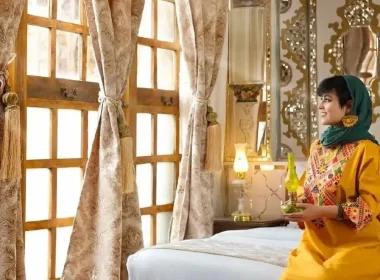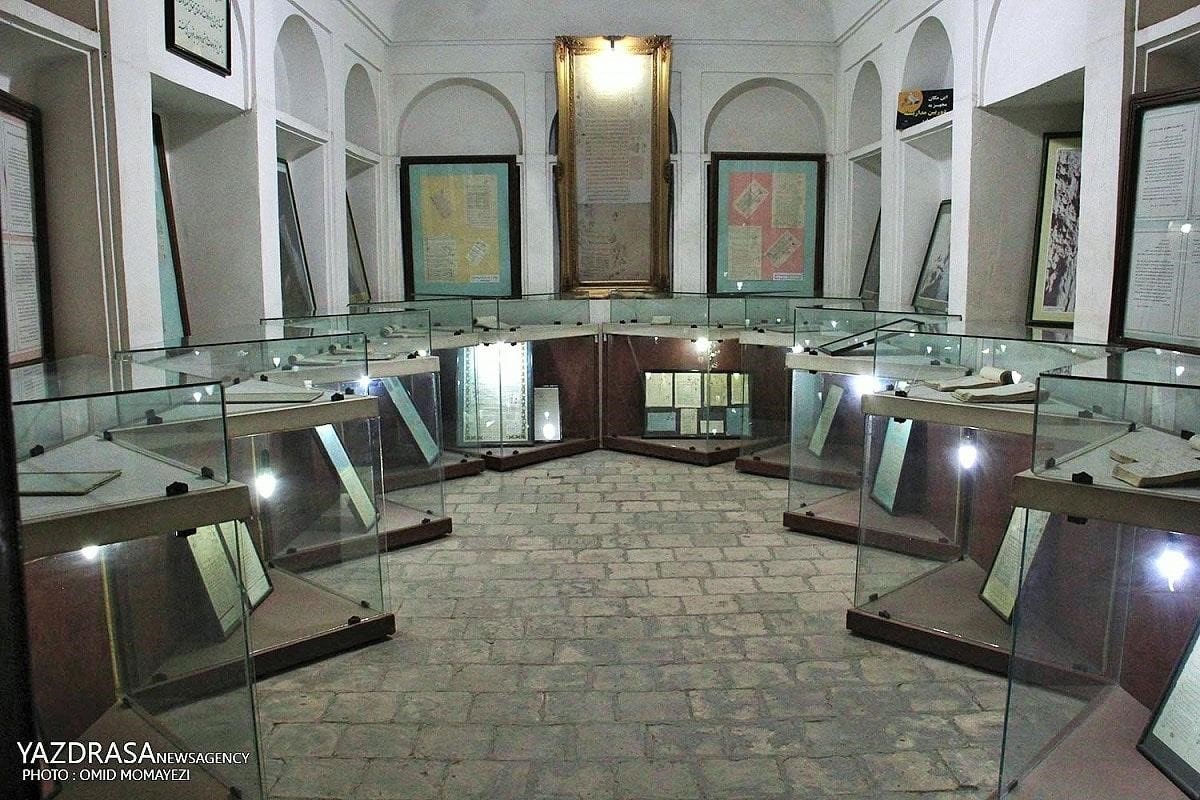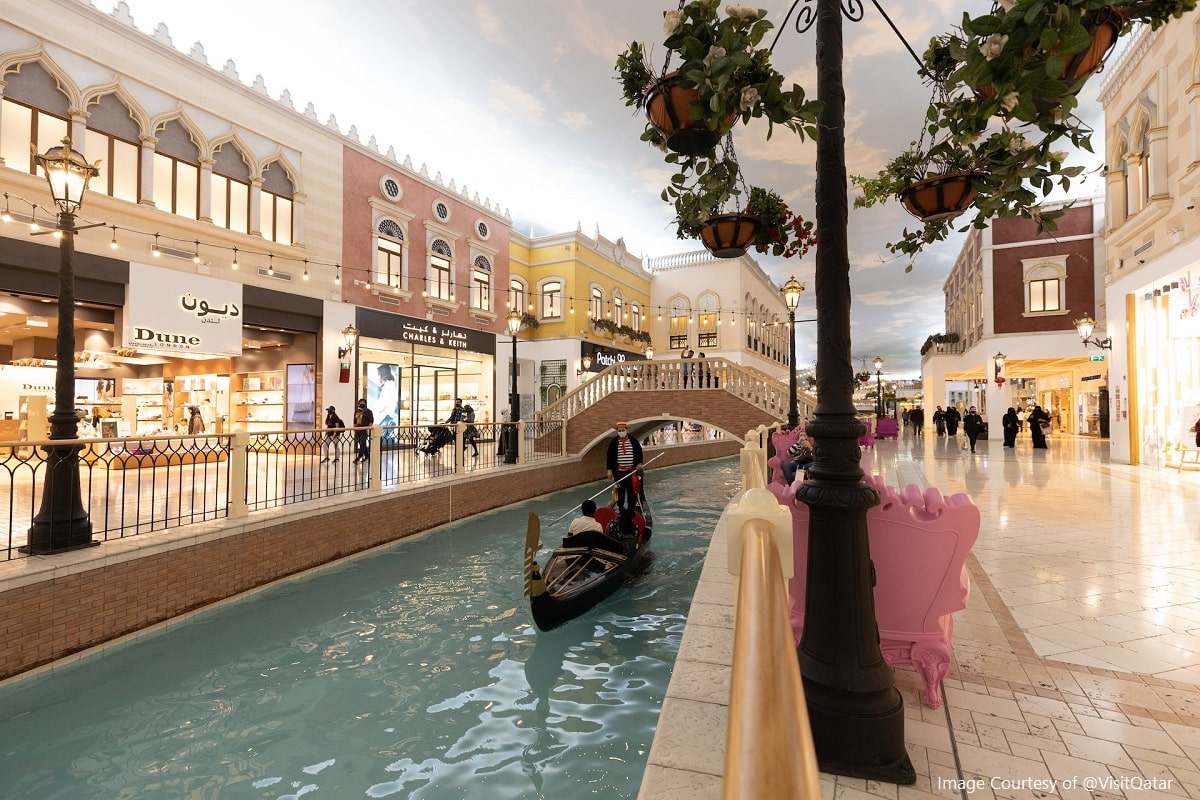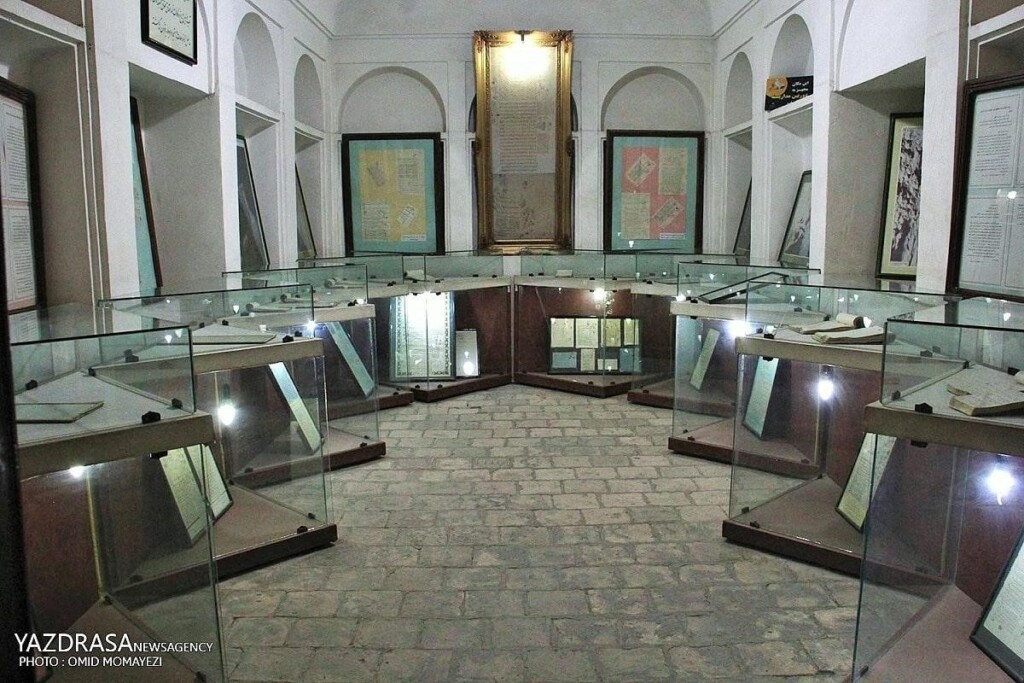
The city of Yazd is one of the first adobe towns in the world and is located in the desert region. Due to dry weather and little rainfall, water has a particular significance in desert regions. The Yazd Water Museum is a display of the significance of water in desert areas. It is also one of the aesthetically pleasing Yazd Tourist Attractions.
This museum is located north of Amirchakhmaq Square in Yazd. The Yazd Water Museum was launched in the Kolahdoozha House in 2000. The inauguration of the museum was at the same time as a conference called Qanat Conference in Yazd City.
Features of Yazd Water Museum, Kolahdoozha House
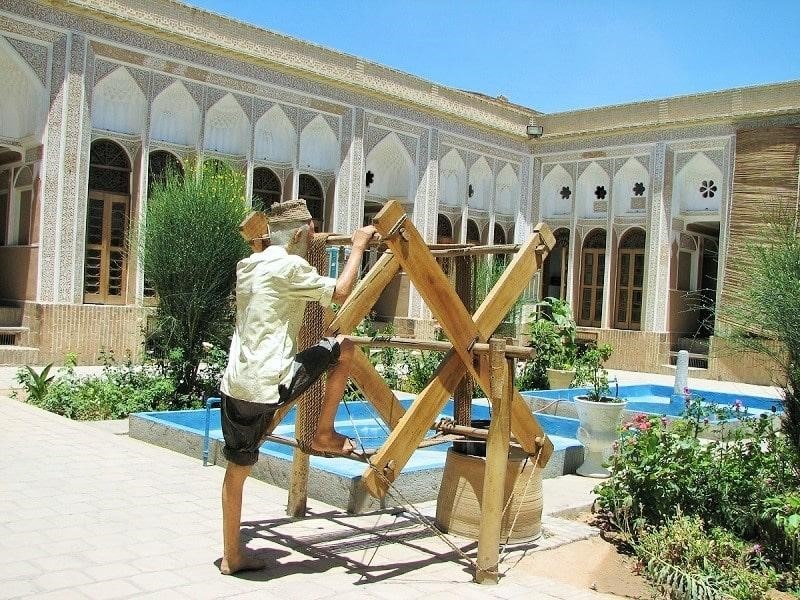
This building was built in the 19th century AD (late Qajar period) by a famous businessman named Haj Ali Akbar Kolahdooz in Yazd City. From an architectural point of view, this house is one of the veiled style houses with an interior and an exterior. The substructure of the building is about 720 square meters and it is built on 5 floors. We will describe each floor in order, starting from the first one:
The First Floor:
Two branches of the Rahimabad and Zarach aqueducts flow through the first floor of this building. The Zarach aqueduct dates back to 2000 years ago. The 75 meters long aqueduct is still carrying water.
The Second Floor:
This floor is 10 meters below ground and is built in the shape of an octagon. Due to the suitable location of the second floor and its stable temperature, it is an excellent place to store food.
On this floor, there is a fountain that is always kept cool because of the constant flow of aqueduct water. This place is considered to be the cellar of the house or Payab. It means a place where the aqueduct flows.
A wooden basket is hanging from the ceiling of the second floor of the Yazd Water Museum. Food items such as cheese and oil were placed in this basket. Some hooks under this basket were used to hang and dry meat. This place is 20 degrees Celsius colder than the backyard, so it is suitable for food storage.
The Third Floor:
This floor is the basement of the Kolahdoozha house. There are many rooms and corridors in this part. This floor of the house was the residence of the people of the house during hot summer days.
The Fourth Floor:
The ground floor is considered the Kolahdoozha house. This floor has different elements. The five-door room (Panjdari), windcatcher room, hall, sashed windows (decorated with beautiful colored glass), kitchen, water reservoir, and the servants’ living quarters are located on the ground floor. There is also a courtyard with two water fountains in the middle of this floor of the Yazd Water Museum.
Decorations of this floor such as muqarnas work, plasterwork, and mirror works are noteworthy. Plasterwork with patterns of plants and birds is among the adornments on this floor.
The Fifth Floor:
It is considered the rooftop of the house and it has a water well. Water was drawn up from the famous 40 Gaz (meter) wells. The well water is suitable for drinking and cleaning. The water obtained from the well is stored in the water reservoir on the ground floor.
Converting The Kolahdoozha House into A Water Museum
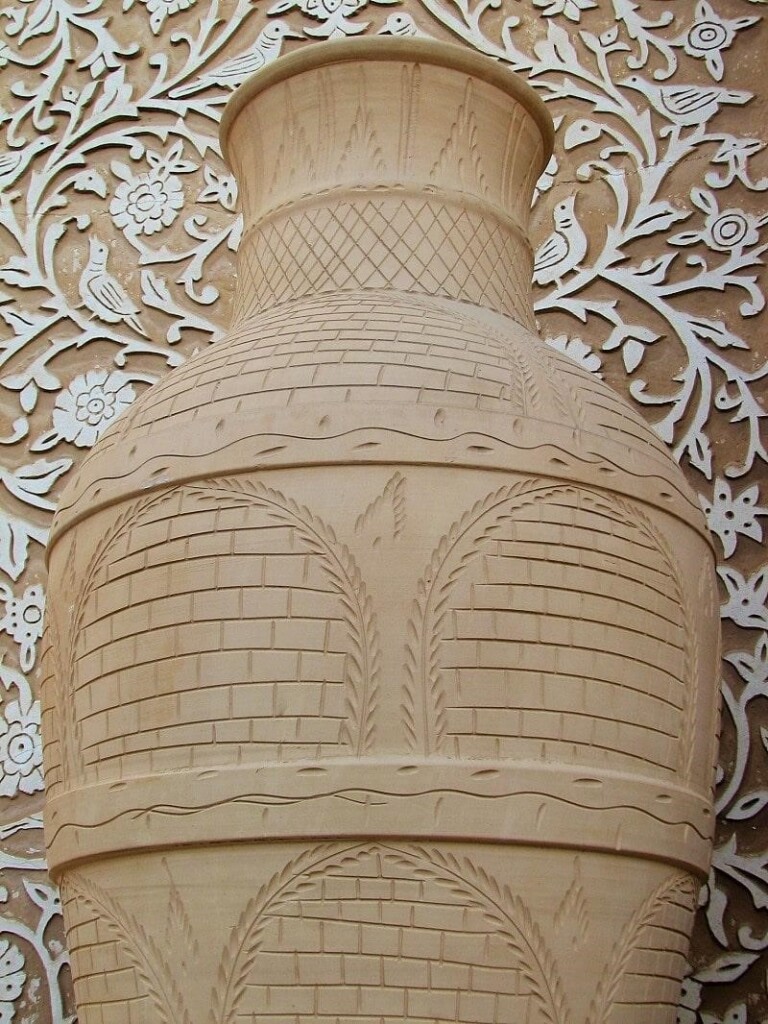
In 1999, a person named Ali Asghar Semsar Yazdi came up with the idea to convert the Kolahdoozha House into a water museum. This idea was implemented a year later and the Kolahdoozha House became a display museum for various artifacts. Semsar Yazdi had the following reasons for his suggestion:
- Kolahdoozha House is located near Amir Chakhmaq Square, a Yazd Tourism Center. This square is one of the main Yazd tourist destinations. Also, the beautiful architecture of the house and its decorations such as plasterwork are examples of the traditional architecture of the past.
- There are various structures and water installations in this building that can become tourist attractions. These structures include Payab and cellar, well chamber and well windlass, water reservoir, and most importantly the Zarach aqueduct that passes through the first floor of the building. This aqueduct has a Payab that has not yet been reopened.
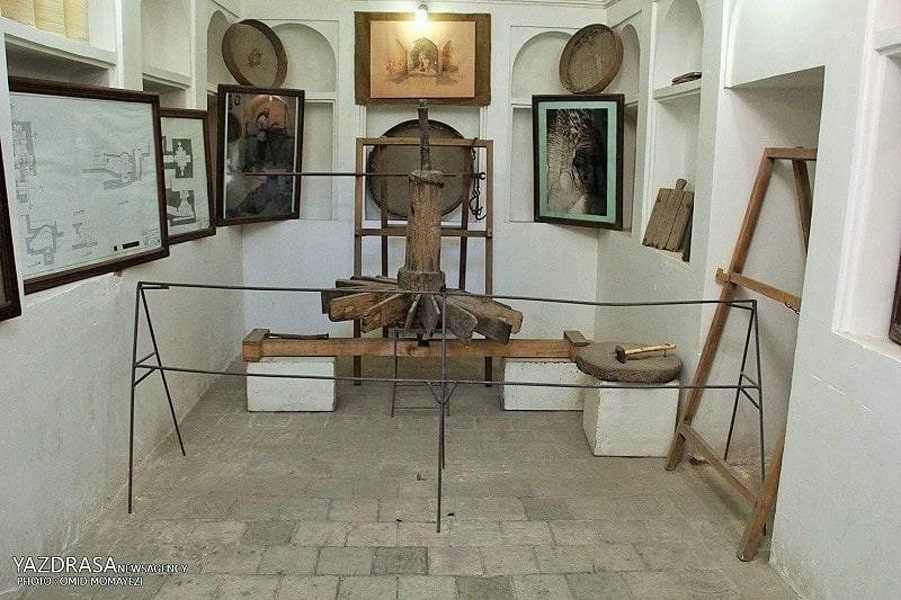
Currently, Yazd Water Museum is open to the public in the Kolahdoozha House. Around 200 artifacts are kept there. Some of the artifacts on display in the museum include aqueduct digging tools, aqueduct digging documents and records, aqueduct lighting equipment, water supply and transportation equipment (jug, pitcher, well windlass, waterskin), water distribution equipment (Tas or bowl, and Sarjeh or time-measuring bowl: a copper bowl with a hole in the middle that’s submerged in a bigger bowl) and devices that utilized water energy (watermill). The artifacts kept in the museum are made of copper, bronze, glass, and clay.
The oldest lighting devices used in the aqueduct are oil lamps. These lights are now kept in Yazd Water Museum. The oil lamp has a cotton wick and a tank.
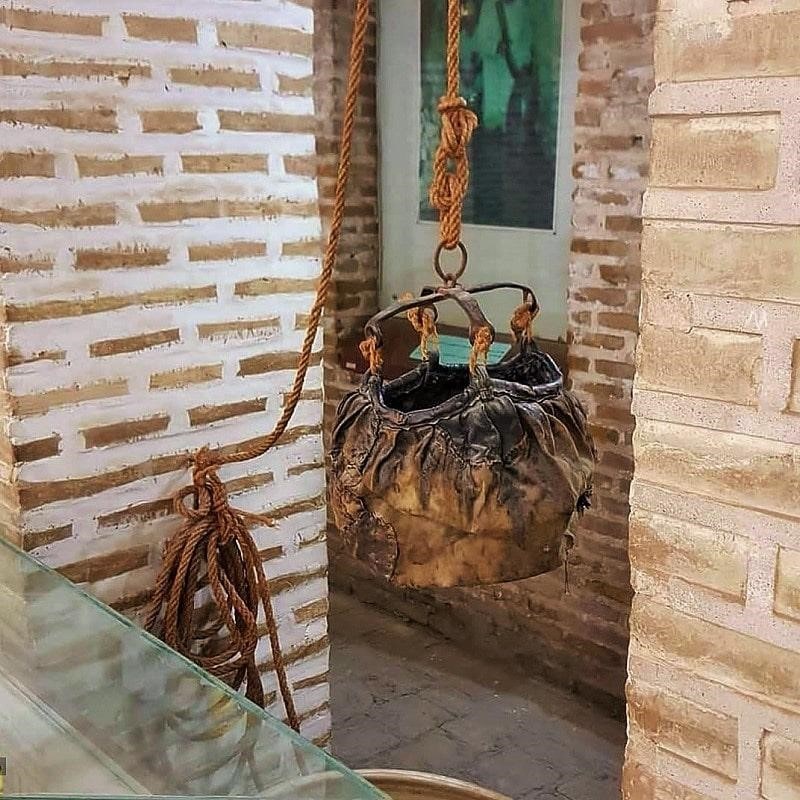
There are other lamps called carbide lamps in this museum, which are made of white stone similar to limestone called carbide stones.
Among the devices kept in the museum, we can mention the water clock. Its old name is the Sebookeshi device. This device is actually a time-measuring instrument that was used in the past.
This clock is a copper bowl container with a hole in the bottom. When this bowl is placed in water, water slowly fills up through the hole in the bottom of the container. A full bowl is a unit called Seboo. This watch is one of the first water clocks in the world.
Visit Yazd Water Museum and the Kolahdoozha House
The artifacts in the water museum show the level of ingenuity and innovation of our ancestors and their insistence on preserving and continuing life in the central areas of the Iranian plateau. Visiting this museum will familiarize you with the struggles and lifestyles of our predecessors.
Kolahdoozha House is a beautiful house in Yazd that has been repurposed. The passage of the Zarach aqueduct through this house is one of the reasons this building has become a water museum. The Water Museum hosts domestic and international travelers every year with the aim of demonstrating the importance of water in desert areas.
If you travel to Yazd on an Iran tour package or by yourself, don’t miss visiting the Yazd Water Museum. Destination Iran invites you to visit the Yazd Water Museum and other Yazd tourist attractions.



